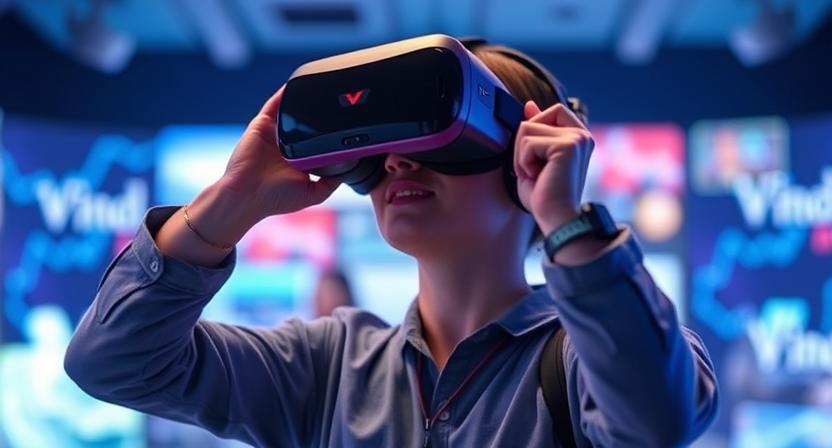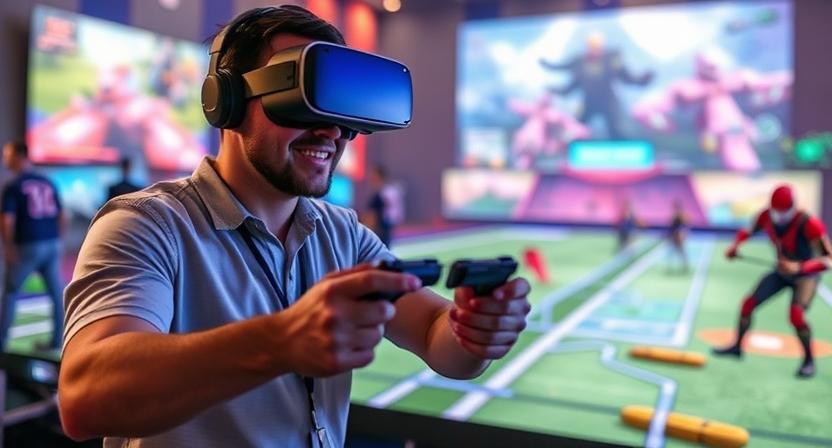The gaming industry has witnessed tremendous growth and innovation in recent years, and two technologies that have been making waves are Augmented Reality (AR) and Virtual Reality (VR). These immersive technologies have been transforming the gaming experience, offering players a new level of engagement and interaction. In this blog, we’ll explore the impact of AR and VR on the gaming industry and what the future holds.
A Brief Overview of AR and VR
Augmented Reality (AR) enhances the real world by overlaying virtual information, images, or objects onto it. Pokémon Go, a popular mobile game, is a great example of AR in action. Virtual Reality (VR), on the other hand, creates a completely artificial environment that shuts out the physical world and immerses players in a virtual one. Oculus Rift and HTC Vive are popular VR headsets that offer an immersive gaming experience.
The Impact of AR and VR on Gaming
- Immersive Experience: AR and VR offer an unparalleled level of immersion, drawing players into the game world like never before. This immersion leads to increased engagement, excitement, and a sense of presence.
- New Gameplay Mechanics: It also enables developers to create innovative gameplay mechanics that aren’t possible with traditional screens. For example, VR games often require players to physically move around or use gestures to interact with the environment.
- Enhanced Storytelling: This allows developers to tell stories in new and innovative ways. Players can explore virtual environments, interact with characters, and experience stories in a more immersive and engaging way.
- Increased Accessibility: These technologies can make gaming more accessible to people with disabilities. For example, VR games can be designed to accommodate players with mobility impairments.
- Esports and Competitive Gaming: AR and VR are opening up new opportunities for competitive gaming and esports. Players can compete in VR tournaments, and AR can enhance the spectator experience.

Challenges and Limitations
- Cost: High-end VR headsets and compatible hardware can be expensive, making it challenging for developers and players to adopt the technology.
- Content: The amount of AR and VR content available is still limited compared to traditional games.
- Technical Issues: This requires high-performance hardware, and technical issues like lag, latency, and motion sickness can detract from the experience.
The Future of AR and VR in Gaming
- Advancements in Hardware: Advancements in hardware, such as improved processors, graphics cards, and displays, will enhance the AR and VR experience.
- Increased Adoption: As it becomes more affordable and accessible, we can expect to see increased adoption among developers and players.
- Cross-Platform Play: We can expect to see more cross-platform play between AR and VR devices, allowing players to interact and play together seamlessly.
- New Business Models: AR and VR will give rise to new business models, such as subscription-based services and pay-per-play models.
Conclusion
AR and VR are revolutionizing the gaming industry, offering players a new level of immersion and interaction. While there are challenges and limitations, the potential for growth and innovation is vast. As hardware improves, content increases and adoption grows, we can expect to see AR and VR become an integral part of the gaming industry.
For a more in-depth look at how to defeat Bodvar and Starolfr, check out Tech Answers Hub’s comprehensive guide.





Leave a Reply